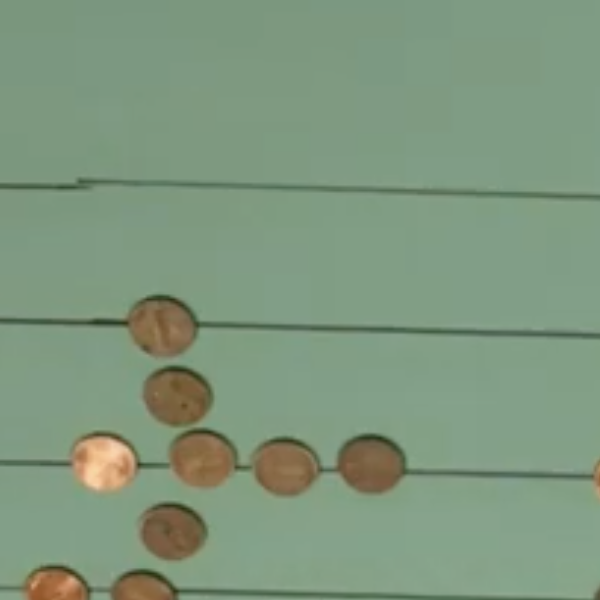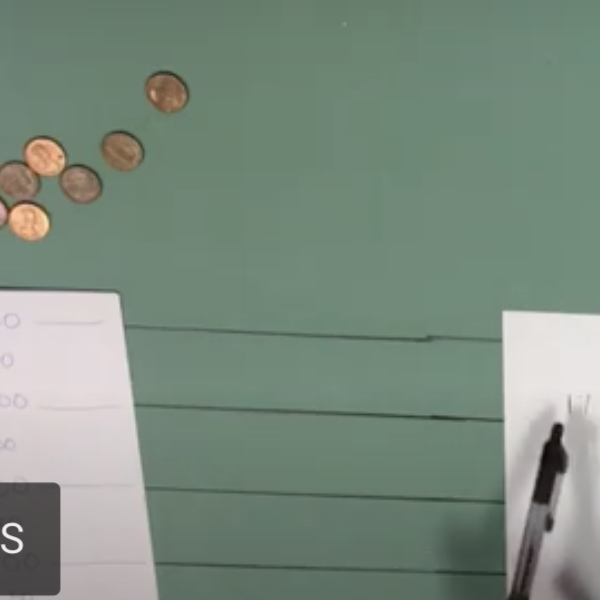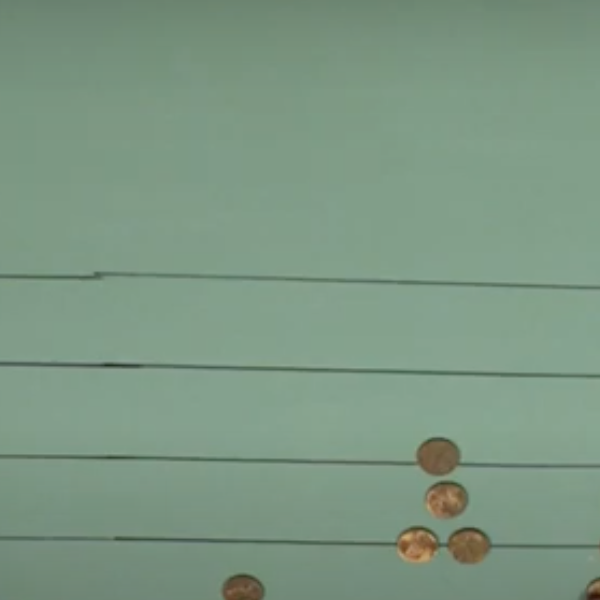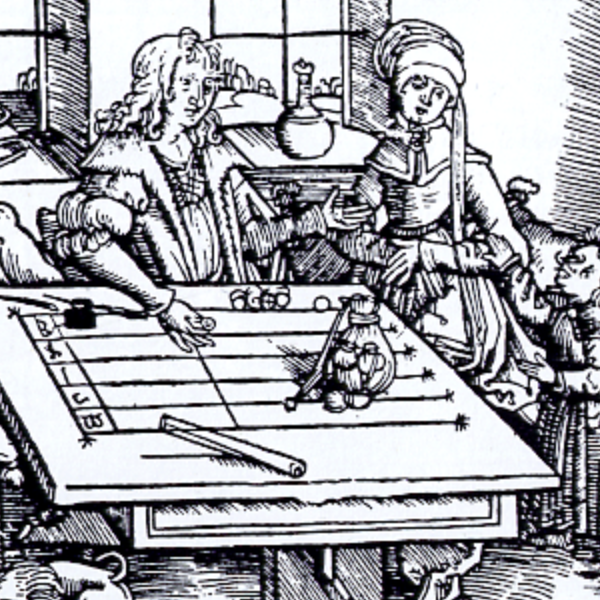History of Pre-Modern Math
Overview
Before the widespread adoption of Arabic numerals, medieval and early modern Europeans added, subtracted, multiplied, and divided using a type of abacus known as a counting board and only afterwards recorded the results of their calculation using Roman numerals, written number words, or object-based number systems. With just a piece of construction paper and a handful of pennies, pebbles, or other small objects, teachers and students can create their own counting board and explore how the public performance of arithmetic differs from the pencil-and-paper arithmetic used today.
Essay
Students often think of mathematics and numbers as transcendental phenomena, which might be slowly discovered over time but are otherwise unaffected by and exist outside of human culture. Historicizing mathematics helps students better understand that culture shapes how and why people perform mathematics. In medieval and early modern Europe, particularly the parts that had formerly been conquered by the Roman Empire, a combination of that shared cultural legacy, high illiteracy rates, and non-decimalized currency led to the dominance of counting board arithmetic for centuries. The following module demonstrates the use of the counting board and how it might be used in a classroom setting to encourage students to think critically about historicized mathematics—not as part of a “great men discover truths” narrative but in a more sophisticated exploration of mathematical culture.
The primary method of arithmetic in medieval and early modern Europe was an abacus system that originated in the Roman Empire. It involved taking a collection of physical objects like pebbles—the word "calculate" in Latin is "calculare," which literally means "to pebble"—and moving them across a lined or unlined flat surface to perform calculations. This surface is commonly called a counting board, although in practice the counting board didn't have to be a board. It could be anything from lines drawn in dirt with a stick to specially engraved tables to more easily transported clothes embroidered with lines. The counting board gave its name to the counting house, where merchants did their bookkeeping, to the British Exchequer, so called because of the "chequered" horizontal and vertical lines of its counting board. While many of these calculations were focused on money, people also calculated everything from the amount of cloth in a merchant's inventory to the amount of bread necessary to feed everyone in a household.
While people originally used stones, coins, or whatever other small objects they had to had, by the 13th century had developed a specific set of coin-like objects to use instead, which were called "jetons" in France and "counters" in England. Medieval counters just had generic images like crosses or keys on them, but by the 16th century, people were producing more personalized and elaborately decorated counters that declared how good their owners were at arithmetic, displayed their owners' titles or coats of arms, or commemorated important people and events. One particularly common type of counter, the reckenmeister counter, was engraved with an alphabet on one side and someone doing counting board arithmetic on the other, and was used in schools to teach both reading and arithmetic. But you didn't have to be able to read and write to use a counting board, which was important in a time when the overwhelming majority of the population was illiterate.
Together, the counting boards and counters created an effective and versatile system for performing arithmetic. The most generic way of using the counting board assumed each line was a progressively higher power of ten – 1, 10, 100, 1000, etc. – making this a base-10 arithmetic system. Two counters placed on the 1s line indicated 1+1=2, while two counters placed on the 10s line indicated 10+10=20 and so forth. The spaces in between the lines were used as a base 5 subbase, so that the space between 1 and 10 indicated 5, the space between 10 and 100 indicated 5, etc. So two counters placed on the 10s line and a counter placed on the 50 space right above it would be 10+10+50=70. This is an additive system with an implicit rather than explicit 0. As seen in the videos, adding with a counting board is quite easy, while methods of subtraction, multiplication, and division are quite similar to modern methods of subtraction, multiplication, and long division with Arabic numerals.
This base 10 form of the counting board mapped perfectly onto the written Roman numeral system, and was designed for people to be able to easily translate (or, to use the more technically correct term, transcode) back and forth between the two. It is important to understand that no one performed arithmetic with Roman numerals. Unlike Arabic numerals, which can be used both to calculate and to record the results of your calculations, Roman numerals do not support pen-and-paper methods of arithmetic. Instead, someone who used Roman numerals would perform the calculations on a counting board and only record the results in Roman numerals afterwards. While this division between calculating and recording might seem strange today, it was perfectly normal in pre-modern Europe and many early modern Europeans who learned to write with Arabic numerals continued to perform calculations with their counting boards instead of learning the new pen-and-paper methods of arithmetic.
But the counting board could also be set up to deal with different numeral bases, which was of vital importance because medieval and early modern Europeans did not have a decimalized currency like most countries do today. In the 8th century, the Carolingian Emperor Charlemagne created a money system that would be used throughout much of Europe up until the 19th century, and even up until 1971 in Britain. The smallest unit of currency was the penny (AKA denier), 12 pennies made up a shilling (AKA sol or sou), and 20 shillings made up a pound (AKA livre). So calculations with pennies were base 12, with shillings were base 20, and only pounds were base 10. Merchants redefined the spaces and lines on their counting boards to accommodate these different bases and were able to perform addition and subtraction across the three different bases as easily as if they had a completely decimal money system.
The counting board remained the dominant way to perform arithmetic in Europe until it was supplanted by pen-and-paper arithmetic with Arabic numerals (also sometimes called Hindu-Arabic numerals or Western numerals). This only became possible because of rising literacy rates, since literacy was a prerequisite to using Arabic numerals, and was enabled by the rise of a new genre of printed arithmetic textbooks. Spain and Italy adopted Arabic numeral arithmetic earliest, during the high and late middle ages, but Arabic numeral arithmetic began to be widely used throughout the rest of Europe in the 17th and 18th centuries. France officially phased out governmental use of the counting board during the French Revolution and the British Exchequer abandoned the counting board in the 1790s.
The sources for this module include a selection of early modern images illustrating the use of counting boards as well as instructional videos on how to perform arithmetic on a counting board. Students can create their own counting boards by drawing lines on a piece of construction paper and use pennies, checkers, pebbles, or other small objects as counters. Counting board arithmetic exercises are best done in pairs or small groups, which both help students learn to use the counting board and give them a better understanding of how pre-modern European arithmetic could be and was often a group activity.
Primary Sources
Bibliography
Ad Meskens, “Mathematics education in late sixteenth-century Antwerp,” Annals of Science 53, no. 2 (1996).
Stephen Chrisomalis, Numerical Notation: A Comparative History, Cambridge: Cambridge University Press, 2010.
Jessica Otis, “‘Set Them To the Cyphering Schoole’: Reading, Writing and Arithmetical Education, circa 1540-1700,” Journal of British Studies 56, no. 3 (July 2017)
Keith Thomas, "Numeracy in Early Modern England: The Prothero Lecture, Read 2 July 1986," in Transactions of the Royal Historical Society, 5th Series, no. 37 (London: The Royal Historical Society, 1987).
Warren Van Egmond, Practical Mathematics in the Italian Renaissance: A Catalog of Italian Abbacus Manuscripts and Printed Books to 1600 (Firenze, 1980).



